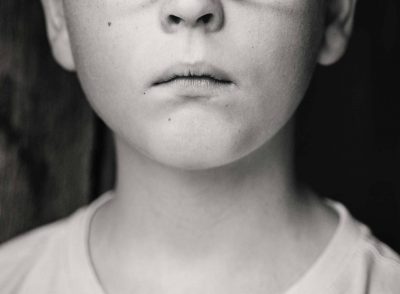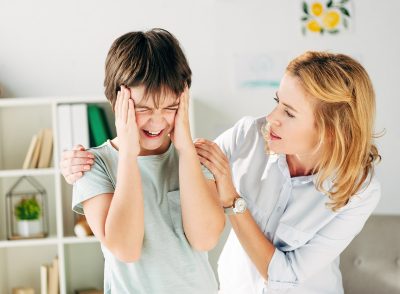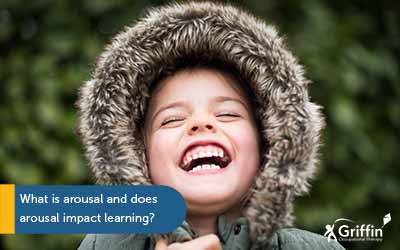Behaviour or communication?
When I speak about sensory differences, one question that always pops up is whether the behaviours are sensory needs or not. In this article I would like to explore classroom behaviours in further depth. This post will explore

Behaviour or communication?
When I speak about sensory differences, one question that always pops up is whether the behaviours are sensory needs or not. In this article I would like to explore classroom behaviours in further depth. This post will explore
Classroom behaviours are always communication
Far too often, the behaviour you are observing is just the tip of the iceberg. It is the easiest thing to see but there is always much more underneath the surface. You must remember that a child’s classroom behaviours are always communication. Your job is to determine what the child is trying to communicate.
Classroom behaviours might be trying to communicate:
Changing your perspective on classroom behaviours
The first thing you need to consider, when supporting children’s behaviour, is how you perceive that behaviour. Classroom behaviours are always an outward indicator that the child needs additional support. Something is not right for them internally. They are trying to tell you something. Yes, the way they are doing it might not be appropriate, but they are trying to tell you something. If you can decipher this message, then you will help them to engage and participate successfully.
Internalised classroom behaviours
When most people thing of the term behaviour, they think of disruptive classroom behaviours. Behaviours that tap into the fight, flight response. We imagine shouting, running, hitting, or throwing. The first thing we think of is the outward representations of need.
This paragraph is to remind you to look out for the children that freeze. These children internalise their distress. Instead of shouting or running, they internalise their need for support by disengaging and going quiet. We often miss these children because they are not causing disruption within the classroom. It is just as important to look out for these children. If they are internalising distress, they will also be struggling to access learning just as much as their peers who externalise their distress.

Disruption at the pool
I was at the community pool for an early morning swim recently and there were four children messing about. They were probably aged 8-14. They had ridden down to the pool on their bikes. Many of the regular swimmers were frustrated by the way the children were playing about at the pool. But one swimmer asked a very good question.
He asked, ‘What was going on in these children’s homes that meant that they were messing about at 6:00am in a community pool? What was so unsafe in their house that meant they weren’t tucked up in bed or having breakfast with their parents?’ This question reframed the group’s thinking. If you can shift your perspective in the same way, it will really help you to unpick and understand behaviours that you’re observing.
Supporting children’s classroom behaviours
To successfully support children’s behaviour, it is important to continually ask what is this behaviour communicating? What is the child trying to tell you through the behaviour you’re seeing? The minute you change your thinking from, ‘Why are they doing that behaviour?’ to, ‘What is that behaviour communicating?’ you will be taking the first step towards understanding the child’s underlying needs.
Let’s take a closer look at the reasons a child might be using behaviour to communicate.
An inability to communicate
Approximately 10% of children have some form of communication difficulty (Speech and Language UK). This can range from being non-verbal to having milder difficulties in either understanding speech or communicating their thoughts. Some children may appear to be very verbal and be able to explain their needs, however they may have difficulty understanding the instructions or information you were trying to tell them. Just because a child has a lot of words doesn’t mean that they’re understanding what you’re saying or that they are able to socially communicate effectively.
If you have any concerns about the child’s ability to either express their needs or understand the information you are telling them, a speech therapy assessment would be the best way to get more information about the child’s ability. There are many strategies that can be put in place to help children with communication difficulties to express their needs.
School aged children who have speech delays will frequently demonstrate behaviours that would be expected from younger children. For example, they may push their peers to get onto a piece of equipment or grab a toy of another child in the same way a toddler might. This is because they are unable to express what they want. These children need to be given communication strategies they can use to express their needs. They may also need to be taught different ways of interacting which are safe and appropriate.
An inability to do the activity
Sometimes children’s classroom behaviours will change when they’re not able to complete an activity. The child might be dyspraxic and be unable to figure out how to complete the task, so they use behaviour to communicate that they’re struggling to understand what to do. It may be that the task is just too hard for their ability, and they use behaviour again to show that they can’t do it. Sometimes these children just need to learn how to ask for help. These children will need work that is differentiated or the instructions to be presented in a different way so that they can access the learning. If you do this, it’s likely you will see a reduction in their behaviours.

Overload from the environment
Children who experience overload often express this through behaviour. Overload can occur from too much sensory information, but it can also occur when there is too much language for the child to process, or if the activity is too difficult. If a child is experiencing overload, then it is important that support strategies are put in place to decrease the overload they are experiencing. I explore sensory overload specifically in this article. It is also covered in my course Sensory Aware with GriffinOT.
Behaviour due to internal dysregulation
Some children have poor awareness of their internal body sensations, or their interoceptive sense. Children with poor interoceptive awareness may not recognise that they are internally dysregulated. They may not recognise that they are feeling unwell or that they are in pain. Sometimes, they don’t recognise that they are hungry need the toilet or are just getting too hot and need to take their jumper off. When this occurs their behaviour changes, but they do not have the awareness to take steps to help them to re-regulate. You can read more about interoception here. I also explore how you can help children bee more aware of their interoceptive sense here.
Attachment and co-regulation
The final thing that impacts significantly on classroom behaviours is child’s attachment style and the regulation experiences they have from their primary caregiver. Children learn to self-regulate; from the co-regulation experiences they have had from their primary caregivers. If there have been disruptions in this early relationship, there will likely be attachment behaviours.
Unfortunately, in some cases, the child may be used to being in a higher state of arousal because of their experiences in their home environment. This feeling will be normal for them, and as strange as it sounds, feeling calm is really unsettling. This is because it is not an experience that they are used to having as they have grown up.
When a child’s behaviour is occurring because of attachment or historical trauma relationships are key. The child should have a key attachment figures and trauma informed approach is recommended. The primary goal here is to help that child to feel safe and to create relationships that will allow that child to feel safe.
I have put this section at the end of the article not because I think it is the least important, but because it is often the one that is most tricky for people to understand. It is the area where we are given the least amount of training. It is however one that is very important and should be considered for all children.
If you take one thing away from this post please, please, please remember, classroom behaviour s are alway communication.
Classroom behaviours conclusion
I hope this article has helped to shed some light on the five most common reasons I find a child’s behaviour might be triggered. If you can consider these, and continually ask the question, ‘What is this behaviour trying to communicate?’ when you are working children, it should help you to be more successful with your behaviour management.
To learn more, on how to reframe behaviour and to also consider the impact of underlying attachments, I would recommend these books:
- When the Adults Change, Everything Changes – Paul Dix
- Scattered Minds: The Origins and Healing of ADHD – Gabor Mate
- What Happened to You? Conversations on Trauma, Resilience and Healing – Oprah Winfrey & Dr Bruce Perry
- The Body Keeps Score – Bessel Van Der Kolk
You can also join the first Level of my course Sensory Aware with GriffinOT for free to understand how the the senses can contribute to classroom behaviour.
Photo Credits
Child’s face – Photo by Kat Smith from Pexels
Children in pool – Photo by Kindel Media from Pexels



